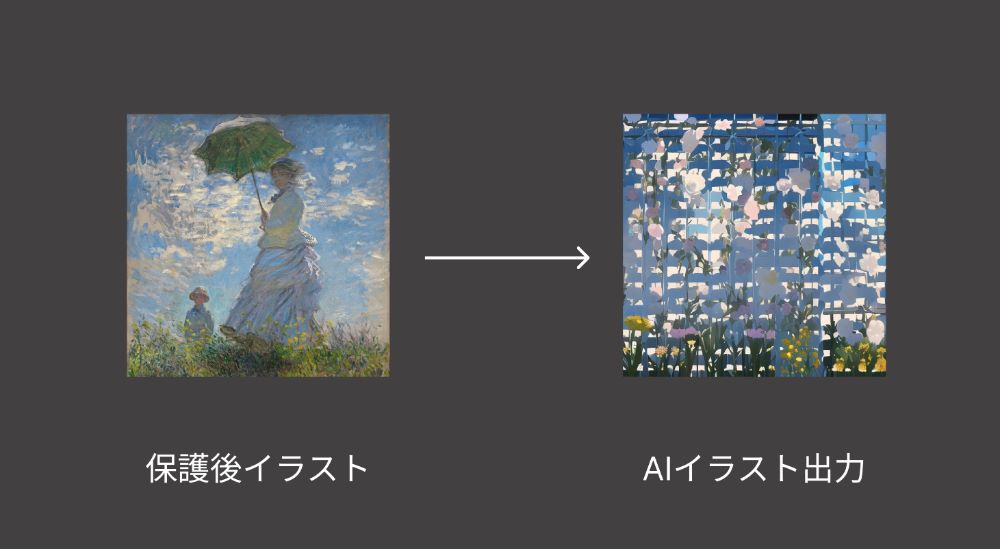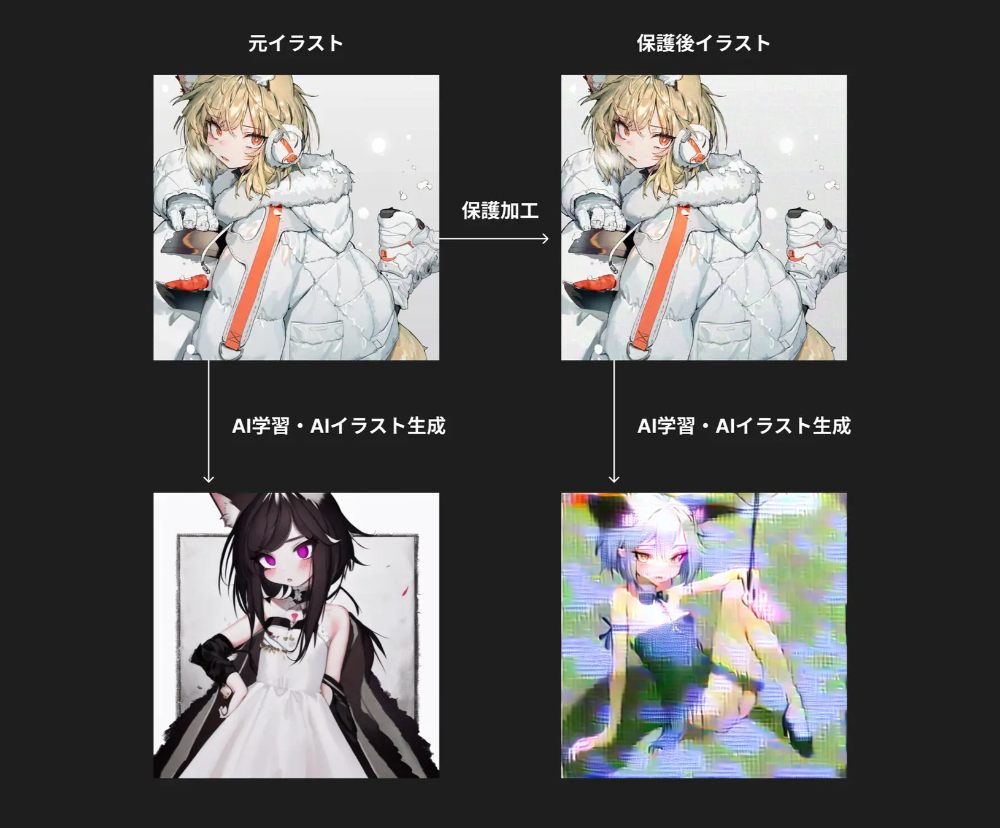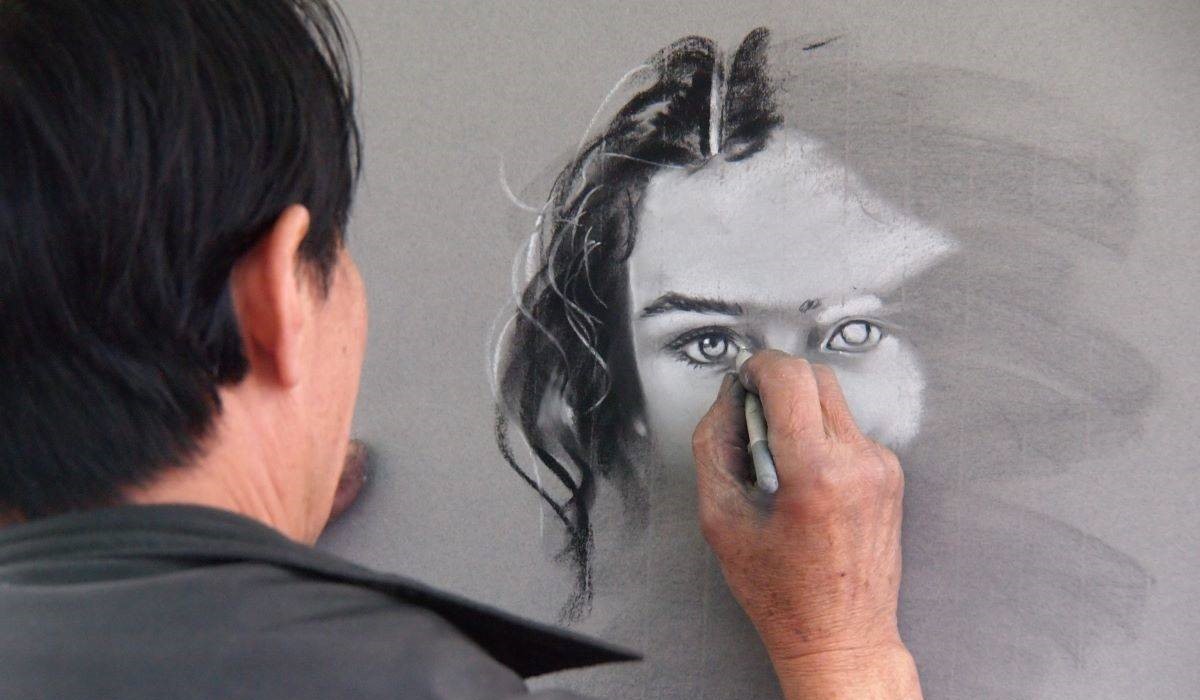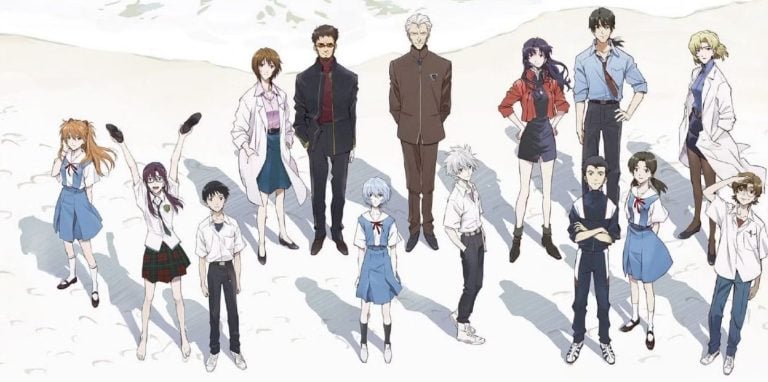Generative AI learning from and mimicking artwork without the creator’s knowledge or permission is a pressing concern for both amateur and professional artists. In response to this problem, Tokyo-based company SnackTime launched a service on January 17 that safeguards artworks from AI. Called “emamori,”, the service protects images from being learned from and mimicked by generative AI programs (Sources: AERA Dot, ITmedia and CNET Japan).
When you upload artwork to emamori, the program adds a digital watermark and noise to the image. These protection methods are invisible to the human eye. Emamori’s digital watermark technology uses the open-source program Mist developed by researchers from Shanghai Jiao Tong University. The free version of emamori uses Mist V1, while paid versions use the recently released Mist V2, which is more effective. If AI attempts to mimic a Misted image, the output will be scrambled and blocky, making the AI generated version unusable as artwork (as seen in the Monet example below).

Although emamori’s combination of Mist watermark and noise does not completely prevent generative AI learning from the image, it does prevent it from producing something usable. The diagram below shows how emamori works in more detail. The original illustration with no protection is on the top left, with an AI image generated from it on the bottom left. In this example, the AI has created a clear, usable image that clearly imitates the artist’s style. On the top right side of the diagram is the original image with emamori’s protection applied. It seems no different to the human eye, but when AI tries to learn from this protected image, it can only produce a very blurry and blotchy imitation (bottom right).

The beta test version of emamori was opened to 300 creators in August 2023. During the test period, over 2000 artworks were uploaded to the program. One of the testers was BL manga artist Tomoko Takakura. Commenting on the service, Takakura stated that she was grateful to emamori for giving her a way to convey that she does not want AI to learn from her illustrations. She also spoke about the negative impact that unauthorized AI learning has had on the health of many young artists, and expresses hope that both creative processes and generative AI development will advance in a healthy way that’s considerate of people. (Source: AERA.dot).
Emamori will offer several tiers of membership. The free version allows users to protect up to 4 images per day. The three paid membership plans are Standard, Pro and Premium, with each successive tier allowing more images to be uploaded and offering extra features. At the time of writing, the service is only available in Japanese at emamori.com.





